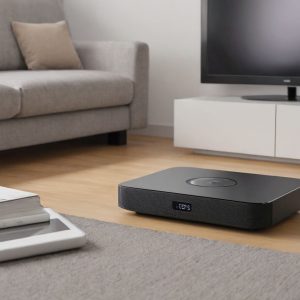Redefining Home Entertainment and Security: The Transformation of Personal Video Recorders into 2024
Table of Contents:
- Introduction
- The Early Days: Set-Top Box Era
- Transition Phase: The Rise of Digital Video Recorders (DVR)
- The Cloud Era: A New Dawn for Personal Video Recorders
- Security and Surveillance: PVR’s Role Beyond Entertainment
- CCTV Camera Evolution
- Bullet and Dome Camera CCTV
- Wireless and Outdoor CCTV Camera Solutions
- The Future Landscape: Predictions for Personal Video Recorders
- Conclusion
- References
Introduction
In digital home entertainment and security, the evolution of Personal Video Recorders (PVR) has been nothing short of revolutionary. Initially designed to record broadcast content for later viewing, PVR technology has undergone significant transformations, morphing from bulky set-top boxes to sleek, cloud-based systems that offer unprecedented flexibility and functionality. This journey reflects technological innovation and shifts in how we consume media and secure our home visit DLNA.
The Early Days: Set-Top Box Era
The advent of set-top boxes marked the first chapter in the democratization of content consumption. Users could record live TV for the first time, pausing and rewinding at their convenience. This era introduced the concept of ‘time-shifting,’ allowing viewers to watch their favorite shows on their schedules. This novelty laid the groundwork for future developments in personal video recording.
Transition Phase: The Rise of Digital Video Recorders (DVR)
Digital Video Recorders (DVRs) represented a leap forward, offering enhanced storage capacities and more intuitive user interfaces. Unlike their set-top predecessors, DVRs could integrate with digital programming guides, making recording schedules more manageable and personalized. This period also saw the introduction of series recording features, further tailoring the viewing experience to user preferences. Explore Nielsen’s findings.
Enhanced Storage Capacities
One of the most significant advantages of DVR technology was its vastly superior storage capacity. Early set-top boxes were constrained by their physical hardware, limiting the amount of content that could be recorded and stored. On the other hand, DVRs embraced digital storage solutions, such as hard disk drives (HDD), which offered exponentially more space. This meant users could store hundreds of hours of high-definition (HD) content without needing external storage devices or frequently deleting old recordings to make room for new ones.
More Intuitive User Interfaces
The shift to DVR also introduced more intuitive and interactive user interfaces. Gone were the days of clunky, text-based menus and limited remote control functions. DVRs boasted graphical interfaces that were visually appealing and easy to navigate. Users could easily search for shows, set recording schedules, and manage their libraries with a few button clicks. This user-friendly approach not only made the technology accessible to a broader audience but also enriched the overall viewing experience.
Integration with Digital Programming Guides
One of the DVR’s most transformative features was its integration with digital programming guides (EPGs). Unlike the passive listings provided by set-top boxes, EPGs offered a dynamic, constantly updated overview of broadcast schedules. This allowed users to browse through channels and programming days or even weeks in advance, setting reminders and recording schedules directly from the guide. Integrating DVRs with EPGs made planning and recording content more manageable and personalized, ensuring users never missed their favourite shows.
Digital Video Recorder (DVR)

The Cloud Era: A New Dawn for Personal Video Recorders
The migration to cloud-based systems has arguably been the most transformative phase for PVRs, freeing users from physical storage and device-specific playback constraints. Cloud technology enabled access to recorded content from any device, anywhere, ushering in a new era of convenience and flexibility. Moreover, data compression and streaming quality advancements ensured that high-definition content could be enjoyed without compromise.
Security and Surveillance: PVR’s Role Beyond Entertainment
Beyond entertainment, PVRs’ role in enhancing home security has become increasingly prominent. Integrated with CCTV cameras, including bullet and dome types, PVRs serve as the backbone of home surveillance systems. They provide real-time monitoring capabilities, store footage for future reference, and, with the advent of wireless and outdoor CCTV cameras, offer comprehensive coverage of one’s property. The evolution from analogue to digital recording has significantly improved the quality and accessibility of surveillance footage, making security systems more robust and effective.
The Future Landscape: Predictions for Personal Video Recorders
Looking ahead, the potential for PVR technology seems boundless. Innovations such as artificial intelligence (AI) and machine learning could enable more brilliant content recommendations and automated security alerts, transforming how we interact with media and monitor our homes. Additionally, the integration of 5G technology promises to enhance PVRs’ streaming and recording capabilities, ensuring seamless, high-quality video playback and recording in real-time.

Conclusion
The journey from set-top boxes to cloud-based personal video recorders encapsulates a broader narrative of technological advancement and changing consumer expectations. As we look towards the future, the continued evolution of PVR technology holds the promise of redefining our entertainment experiences and providing sophisticated home security solutions. In this ever-changing landscape, one thing remains clear: the potential of personal video recorders to enhance our daily lives is only beginning to be realized.



